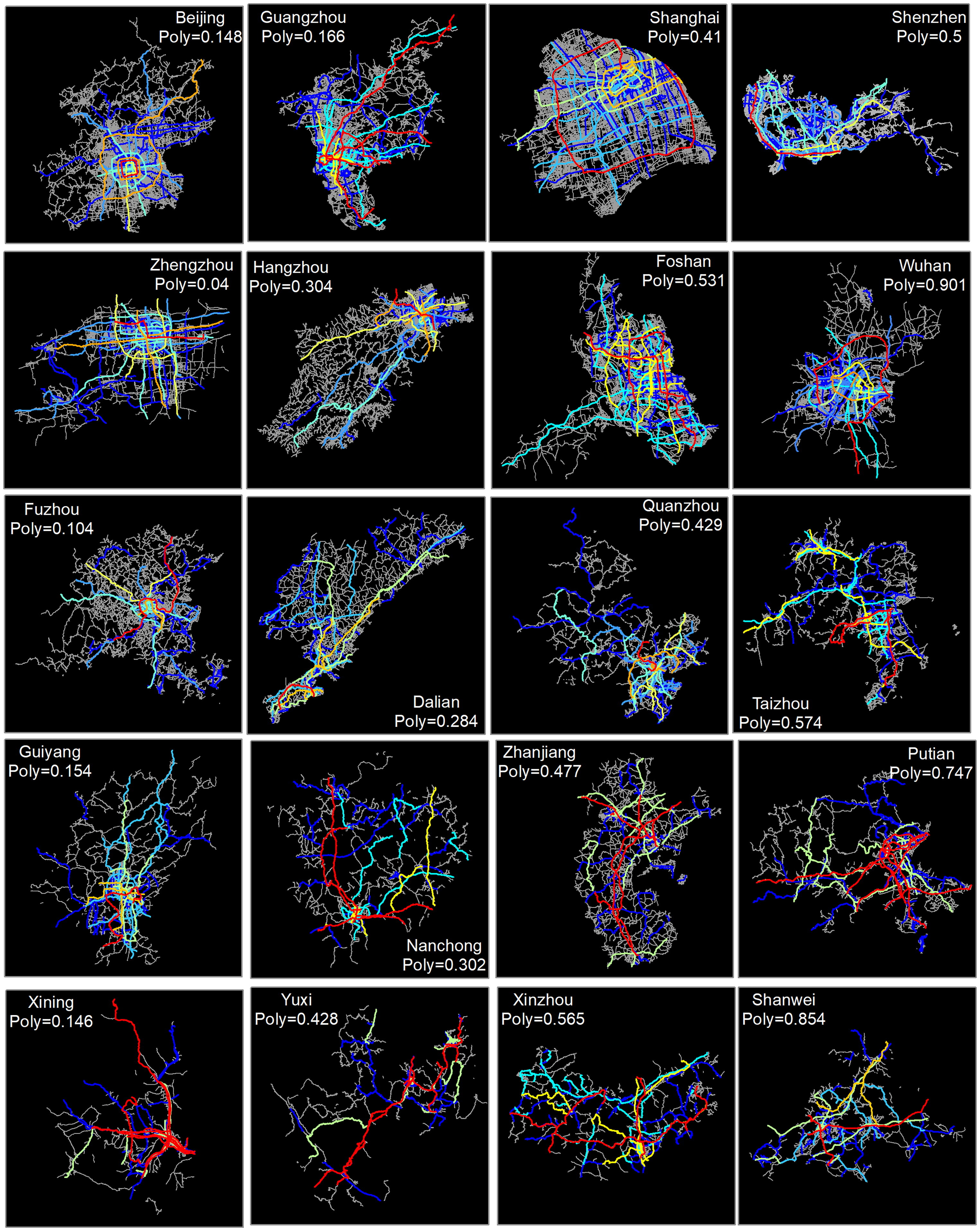Title: Graph convolutional networks for street network analysis with a case study of urban polycentricity in Chinese cities

Abstract
Graph theory effectively explains urban structures via street–street connectivity. However, systematic comparisons of street structures across cities remain challenging. This study employs graph convolutional networks (GCNs) to analyze street network structures. A two-branch GCN was used as the backbone to extract comparable features among street networks. The proposed approach was used to examine the structures of different urban road networks in a case study of polycentricity prediction across 298 Chinese cities. The model transformed approximately 4.5-million street segments into natural streets to create urban street graphs, which were subsequently analyzed to extract local and global embeddings. The extracted embeddings – with a portion labeled with a known urban polycentricity score – were used to predict the score for each city through a single-layer perceptron (SLP) model. Our results show consistency between the predicted polycentricity scores based on the derived street embeddings and those based on the population. Thus, the proposed GCN-based method can effectively predict the complexity and interconnection of street networks in different cities. This innovative integration of GCNs into urban studies demonstrates that deep learning techniques can analyze and comprehend the intricate patterns of street networks on a large scale.
Keywords
Graph convolutional network;
deep learning;
street network;
urban structure
Full Text Download
International Journal of Geographical Information Science
Q.E.D.









